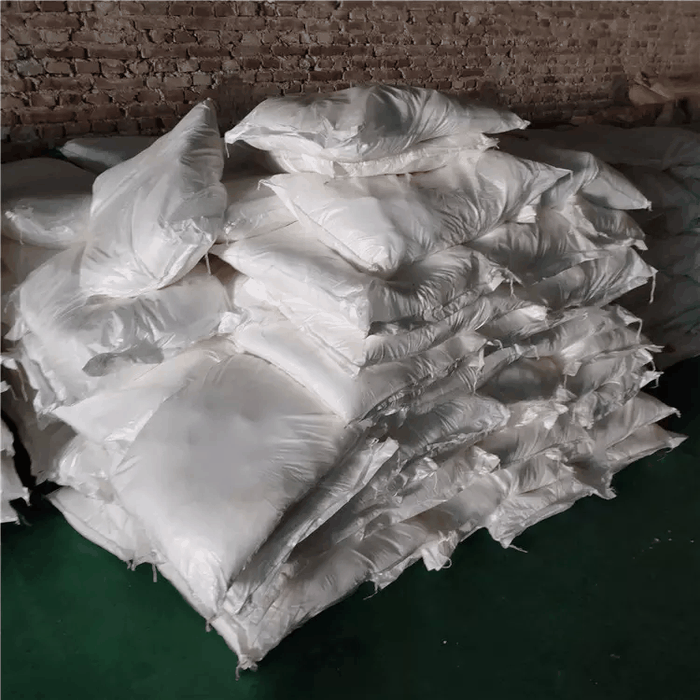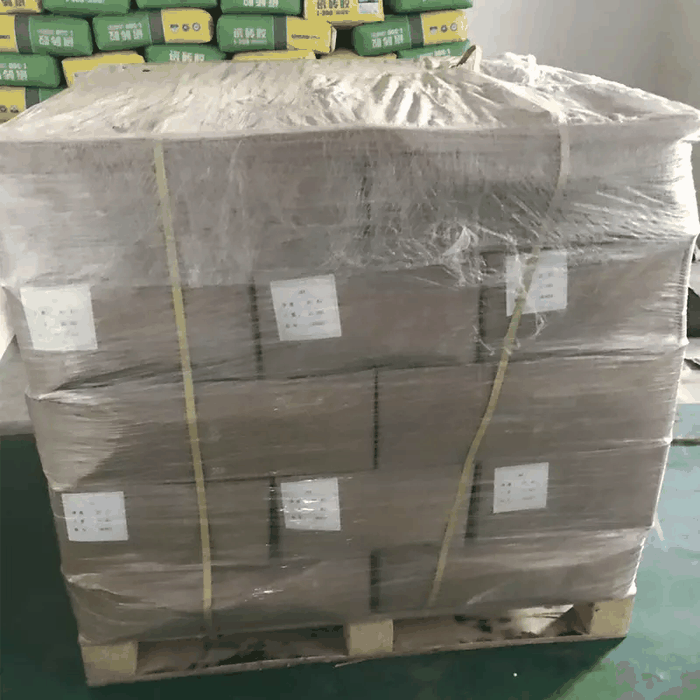Pancreatin
Synonym(s):Pancreatin;Pancreatin from hog pancreas
- CAS NO.:8049-47-6
- Empirical Formula: N/A
- Molecular Weight: 0
- MDL number: MFCD00131789
- EINECS: 232-468-9
- SAFETY DATA SHEET (SDS)
- Update Date: 2024-12-18 14:08:52
What is Pancreatin?
Chemical properties
cream powder
Chemical properties
Pancreatin is a yellowish to cream-colored, amorphous powder with a strong odor. Slightly soluble in water. Hazard Identification (based on NFPA-704 M Rating System): Health 1, Flammability 1, Reactivity 0. Sparingly soluble in water.
History
The first observations and experimental demonstrations that pancreatin could be used to improve protein and fat digestion in animals and human patients are from the 19th century, soon after Claude Bernard had revealed the essential role of pancreatic secretion in the digestion of foods. In 1859, the dutch physician Joseph Alexander Fles showed that the daily intake of calf pancreas extract could restore the digestion of fat in a diabetic patient who suffered from diarrhea and had large amounts of fat in the stools. In 1890, Abelmann showed that the consumption of fresh pig pancreas could improve protein and fat digestion in dogs after surgical removal of the pancreas. This is considered as the first experimental demonstration of enzyme replacement[1].
The Uses of Pancreatin
Hydrolyzes starch into dextrins and sugar Pancreatin from porcine pancreas is used in the treatment of steatorrhea by lipase supplementation therapy and for pancreatic diabetes. It is also used in the removal of formalin-fixed tissues from arterial grafts without causing damage in fiber integrity. Further, it finds uses in contact lenses. In addition to this, it hydrolyzes starch into dextrins and sugar. It is also used to treat conditions responsible for deficiency in pancreatic secretions, such as surgical pancreatectomy, pancreatitis and cystic fibrosis.
The Uses of Pancreatin
Enzyme (digestant adjunct).
brand name
Panteric (Parke-Davis).
Biological Functions
Pancreatin is a supplement that can result in decreased food intake. It is used for digestion, and absorption of food. Your pancreas secretes about one and one half quarts of pancreatic juice daily into the small intestine.
General Description
Pancreatin (Panteric) is a substance obtained from the fresh pancreas of the hog or the ox and contains a mixture of enzymes, principally pancreatic amylase (amylopsin), protease, and pancreatic lipase (steapsin). It converts not less than 25 times its weight of USP Potato Starch Reference Standard into soluble carbohydrates and not less than 25 times its weight of casein into proteoses. It acts best in neutral or faintly alkaline media, and excessive acid or alkali renders it inert. Pancreatin can be prepared by extracting the fresh gland with 25% alcohol or with water and subsequently precipitating with alcohol. Besides the enzymes mentioned, it contains some trypsinogen, which can be activated by intestinal enterokinase; chymotrypsinogen, which is converted by trypsin to chymotrypsin; and carboxypeptidase.
Pancreatin is used largely for predigestion of food and for the preparation of hydrolysates. The value of its enzymes orally must be very small because they are digested by pepsin and acid in the stomach, although some of them may escape into the intestines without change. Even if they are protected by enteric coatings, it is doubtful they could be of great assistance in digestion.
Biochem/physiol Actions
Due to the enzymatic components such as trypsin, amylase and lipase, pancreatin hydrolyzes proteins, starch and fats. Pancreatin will convert not less than 25 times its weight of potato starch into soluble carbohydrates in 5 minutes in water at 40?°C, will digest not less than 25 times its weight of casein in 60 minutes at pH7.5 at 40?°C and will release not less than 2 microequivalents of acid per min per mg pancreatin from olive oil at pH9.0 at 37?°C.
Safety Profile
Moderately toxic by subcutaneous and intraperitoneal routes.
Potential Exposure
It is an enzyme found in the pancreas and is used in medicines and in treating leather and textiles.
Metabolism
Pharmacokinetic data are not available as the enzymes act locally in the gastrointestinal tract. After exerting their action, the enzymes are digested themselves in the intestine.
Incompatibilities
Dust may form explosive mixture with air. Incompatible with oxidizers (chlorates, nitrates, peroxides, permanganates, perchlorates, chlorine, bromine, fluorine, etc.); contact may cause fires or explosions. Keep away from alkaline materials, strong bases, strong acids, oxoacids, epoxides, alcohols.
References
[1] Amal Salhi . “Characterization of all the lipolytic activities in pancreatin and comparison with porcine and human pancreatic juices.” Biochimie 169 (2020): Pages 106-120.
Properties of Pancreatin
| Density | 1.4-1.52 |
| vapor pressure | 0Pa at 25℃ |
| storage temp. | -20°C |
| solubility | Soluble or partly soluble in water forming a slightly turbid solution; practically insoluble in ethanol (96%) and in ether . |
| form | powder |
| color | beige |
| Water Solubility | Soluble in water. Insoluble in alcohol and ether. |
| Merck | 13,7075 |
| Stability: | Stable. Incompatible with alcohols, strong acids. |
| EPA Substance Registry System | Pancreatin (8049-47-6) |
Safety information for Pancreatin
| Signal word | Danger |
| Pictogram(s) |
 Exclamation Mark Irritant GHS07  Health Hazard GHS08 |
| GHS Hazard Statements |
H315:Skin corrosion/irritation H317:Sensitisation, Skin H319:Serious eye damage/eye irritation H334:Sensitisation, respiratory H335:Specific target organ toxicity, single exposure;Respiratory tract irritation |
| Precautionary Statement Codes |
P261:Avoid breathing dust/fume/gas/mist/vapours/spray. P264:Wash hands thoroughly after handling. P264:Wash skin thouroughly after handling. P280:Wear protective gloves/protective clothing/eye protection/face protection. P302+P352:IF ON SKIN: wash with plenty of soap and water. P305+P351+P338:IF IN EYES: Rinse cautiously with water for several minutes. Remove contact lenses, if present and easy to do. Continuerinsing. |
Computed Descriptors for Pancreatin
Pancreatin manufacturer
Jeevan Chemicals and Pharmaceuticals
Meteoric Biopharmaceuticals Pvt. Ltd.
Apollo ingredients Pvt Ltd
Ann Organic India Private Limited
New Products
(S)-3-Aminobutanenitrile hydrochloride 4-Methylphenylacetic acid N-Boc-D-alaninol N-BOC-D/L-ALANINOL Tert-butyl bis(2-chloroethyl)carbamate 3-Morpholino-1-(4-nitrophenyl)-5,6-dihydropyridin- 2(1H)-one Furan-2,5-Dicarboxylic Acid Tropic acid 1-Bromo-3,5-Di-Tert-Butylbenzene S-2-CHLORO PROPIONIC ACID ETHYL ISOCYANOACETATE 2-Bromo-1,3-Bis(Dimethylamino)Trimethinium Hexafluorophosphate 4-IODO BENZOIC ACID 3-NITRO-2-METHYL ANILINE 1-(2,4-DICHLOROPHENYL) ETHANAMINE (2-Hydroxyphenyl)acetonitrile 4-Bromopyrazole 2-(Cyanocyclohexyl)acetic acid 4-methoxy-3,5-dinitropyridine 1-(4-(aminomethyl)benzyl)urea hydrochloride 2-aminopropyl benzoate hydrochloride diethyl 2-(2-((tertbutoxycarbonyl)amino) ethyl)malonate tert-butyl 4- (ureidomethyl)benzylcarbamate Ethyl-2-chloro((4-methoxyphenyl)hydrazono)acetateRelated products of tetrahydrofuran








You may like
-
 Pancreatin 99%View Details
Pancreatin 99%View Details -
 Pancreatin 99%View Details
Pancreatin 99%View Details -
 Pancreatin 8049-47-6 98%View Details
Pancreatin 8049-47-6 98%View Details
8049-47-6 -
 Pancreatin, from porcine pancreas powder, suitable for cell culture, 4 × USP specifications CAS 8049-47-6View Details
Pancreatin, from porcine pancreas powder, suitable for cell culture, 4 × USP specifications CAS 8049-47-6View Details
8049-47-6 -
 Pancreatin, from pig pancrease CAS 8049-47-6View Details
Pancreatin, from pig pancrease CAS 8049-47-6View Details
8049-47-6 -
 Pancreatin from Porcine Pancreas CAS 8049-47-6View Details
Pancreatin from Porcine Pancreas CAS 8049-47-6View Details
8049-47-6 -
 Pancreatin 4NF ex. Porcine Pancreas CAS 8049-47-6View Details
Pancreatin 4NF ex. Porcine Pancreas CAS 8049-47-6View Details
8049-47-6 -
 Pancreatin CAS 8049-47-6View Details
Pancreatin CAS 8049-47-6View Details
8049-47-6